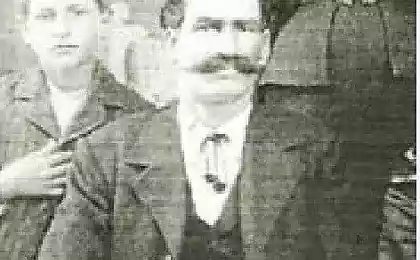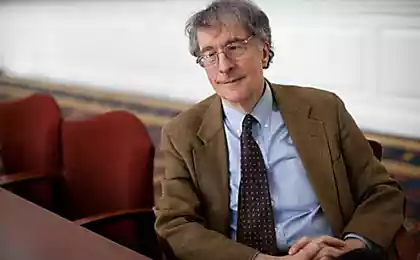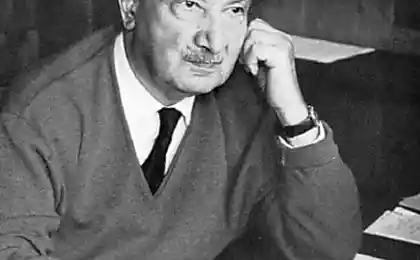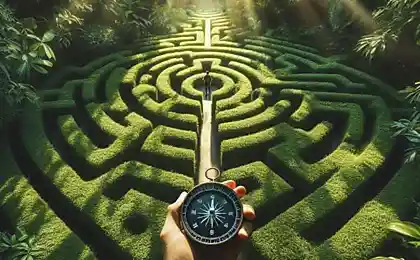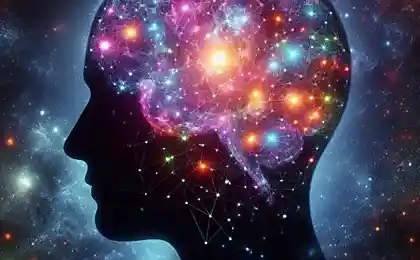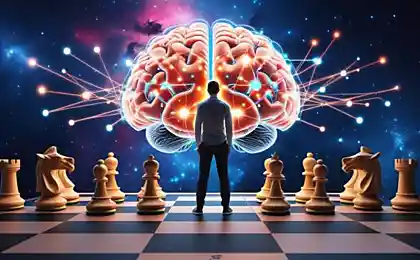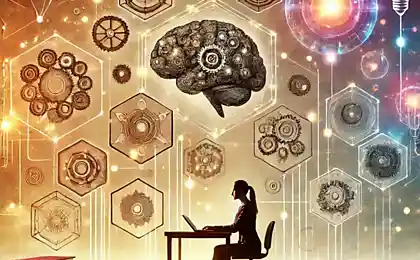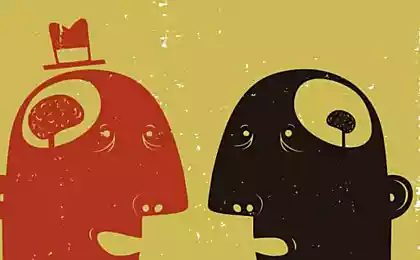592
Scheme creative mechanism —a brief history of human thinking

© Nick Van Woert
What are thinking strategies and which of them the best that is in the process of learning and how the system reflex when told associate Professor of the Institute of psychology named Vygotsky RSUH in the "Popular lecture series" of the magazine "Popular mechanics".
Thoughts are not always interested in people as much as they interest us now. The principal concern in life was religion, and it is a feeling, an emotion. Interested in your thoughts folks started in the age of Descartes. During the XVI century, mankind has changed so much that people who lived in the beginning of the century, there was still nothing to talk about — they thought differently. Those who lived in the end of the century, we could talk much easier. The idea of "I'm wrong, therefore I am" probably goes back to St. Augustine, who lived much earlier than Descartes. But there is a fundamental difference between Descartes and Augustine: Descartes is wrong and, looking inward, sees doubt, sees the desire in some to understand, and Augustine sees the desire to overcome their mistakes by faith. It's a completely different look and image. Descartes drew our attention to how important thought and the thinking process. The philosopher was born in 1596 in an impoverished family. He served in the Dutch army, and when the 30-year war, went to serve in Germany, participated in the siege of La Rochelle. Later, he again escaped to Holland, where he began work on his writings. By itself, a religious war has not given any more enlightened people: Protestants lit bonfires, Catholics, lit bonfires, but I was able to migrate from one to another that Descartes ever did. At this point, the struggle for the idea was everywhere — all over Europe competed for the opportunity to convey thoughts. In 1600 in Rome burned Giordano Bruno. On the court, he said: "Burn do not mean to deny".
"The number of donkeys is a mystery to me, but the quality of the donkeys leads to the admiration of..." — this line from a poem by Vladimir Kostrov vividly illustrates the attitude of Bruno to those who didn't pay his thought sufficient attention.
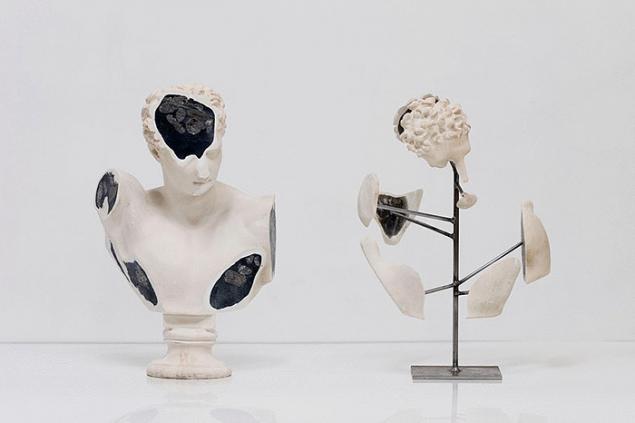
Descartes brings two main ideas: the first is God governs the world. He created nature, and then it works itself. And second, the world consists of matter in motion, which can also be explored.
In the middle of the XVI century, there what we then called relativism, that is, the principle of relativity. Galileo posits it for classical mechanics. Something to learn and something to think, to offer a method, a way to find out. That is, the necessary coordinate system. This reminds me of Hawking and "a brief history of time": a train, two people play him in ping-pong. How to fly the ball ping-pong table? For people who are in the train, the ball flies quickly, for someone who is in the Universe, he does not move. because it is. And who is this someone we ask how to move the ball? To ask such a question, we need to put this man at every point. If we do not consider the properties of the psyche, the picture collapses, because without knowledge of these properties we do not get an answer. We need to first answer: what does the one who we ask?
In order to understand how to formulate these questions, mankind has created two tools — a thinking and science. Thinking is the highest process of information processing. As a result of thoughts, we question and proposed study methods and coordinate system.
How does Myslenice to understand how it works, thinking from the point of view of the organism, it is possible to propose a model that generates a response signal from the external environment. The first such model is called stimulative when the stimulus occurs the reaction. The second model is reflexive, and the third is instinctive. Initially, the stimulus may generate different reactions: a bird does not know where are the branches in the forest, the ant doesn't know where the needle. So they just start to look. Reactions are many — where found, picked up there.
In the process of learning in the system is a compression of the information is similar to how we convert a song into another format, so that it takes up less space. The rejection of irrelevant information allows to save computational resources, to implement a model of learning.
Until the second half of the twentieth century, psychology was interested in how incentives are related to reactions, and later the entire industry, which study the properties of thinking, engaged in higher processing of information. The cognitive revolution occurred in the leading American universities, there was cognitive psychology and the science, trying to understand what's going on inside.

Ivan Pavlov sought to find a system of reflex connections between man and reality, but to build it to a simple scheme did not work. Pavlov formulated the idea about how the work in the signal system, as there are only two: the first signal or unconditional, the system receives certain stimulus, which later will be converted in the reaction. The second signal system, the incentive goes into a sign. In the postmodern era has revealed that there is a third signaling system is a social.
The task of information processing is to save recalculation time from stimulus to reaction when you have to discard all irrelevant information and leave significant.
Within the first signal system real object discards the insignificant features in the second system information is discarded to transform into a sign. The information is already "cleaned", it goes to verbal. Many of our actions are modeled by people around us: the fact of the presence nearby of another person influences the final choice of response. The third signal system filled with social standards and unconscious social reactions. We filter more and more information and, finally, I come to the specific reaction, that is, to behavior that is undertaken. The totality of these complexes is the highest function of processing information. This is our difficult path from simple stimulus to complex reactions.
The types mislesevo many cases, we need induction — that is, the decompression information. First, there is the content of the abstract image of specific parts that turn into the feeling — the signs are already not Express. For example, every girl knows about love, knows that the man "have something", that is, love has certain attributes, such as engagement ring and more. After the same attribute of the wedding ring disappears.
Our mind works in the direction of concentration and abstraction. There are several kinds of thinking that are both practical and theoretical. Visual — practical thinking exists among children up to six years — thoughts on any subject to appear only when the thing is in the hand. After one and a half years developing a specific subject kind of thinking, when children are unable to manipulate the object. However, to have what we call thoughts, the subject still has to act on the child. Before entering the school is leading the process of thinking. Parallel begins to develop visual-figurative thinking — in order to have any thoughts about this or that phenomenon, it is enough just to see. Subsequently, there is a theoretical way of thinking, when enough just something to imagine. The highest degree of development of this tool is abstract thinking, when the subject learns to manipulate the designs, having the characteristics of real objects.
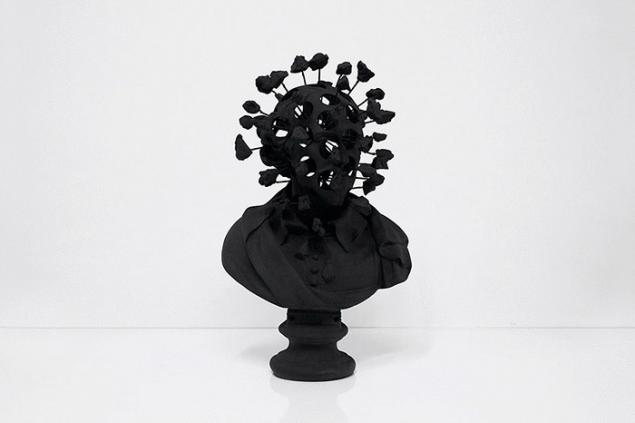
Abstract thinking and preimushestvenno the assumption that abstract thinking style have not all people — let's say the average person is not able to think abstractly. What is the advantage of this way of thinking? In Chekhov's story "Ionych" is a great characterization of people that don't have abstract thinking. The hero of the story says that the man in the street a kind — hearted person and very nice until he talks about something that you can eat. As soon as it comes about things is fundamentally inedible, it expands a concept that can only spit in his face and turn away. That is, as soon as it comes on nepredmetno categories, people do not have abstract thinking, lose the subject, its very upsetting.
The more the subject developed abstract thinking, the more his ability to calculate in advance the possible outcomes of a given situation. There is a process that allows to stimulate the processing of information, this process is called creative movement.
Scheme creative mehanizmov 1908 at the meeting of the psychological society of Paris, Henri poincaré made a report. He, unfortunately, was not recorded. In it poincaré showed a diagram of the creative mechanism, which was later ascribed to Graham Wallace. So, any creative process has 4 stages: the first is preparation, in which the formulation of the problem, the formation of the system of coordinates. During the second stage — incubation — energy accumulates, and the third — there is a solution to a particular problem within the first signal system, when we feel that we had some idea, but can't Express it as something specific. The fourth, final stage is a check of the result — if we think that others will react incorrectly, the information returns to the first stage.
It is important that the process of information overload, we did not forget about the original stimulus, which must be followed by one specific reaction. If we forget about it, then closes within a signal system, and the initial stimulus becomes nonsense.
Source: theoryandpractice.ru
